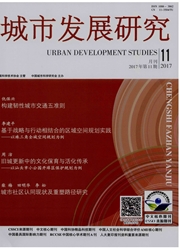

 中文摘要:
中文摘要:
通过构建基础教育设施供给模型,以广州市花都区为例,从供给主体结构及制度设计视角探讨了转型期基础教育设施供给模式变革及其驱动机制。结果表明:政府是计划经济时期基础教育设施的唯一供给主体,一体化承担其提供和生产责任,供给决策受政治运动主导,并通过垂直层级式监督实现供给管理;改革开放以来,差异化利益定位和实现机制驱动市场企业组织和社会组织参与了基础教育设施的供给,基础教育设施的提供和生产逐步分离,生产主体和生产流程日趋多样化和复杂化,但供给监督仍以体制内约束为主。供给主体多元化及多样化机制组合驱动基础教育设施供给模式综合变革,是转型期制度政策变革、市场机制和社会因素共同作用的结果,体现出结构-能动性互动机制。
 英文摘要:
英文摘要:
The provision pattern of basic education facilities are closely related to social and economic development environment.The purpose of this paper is to analysis the changes of provision pattern of basic education facilities and its driving mechanism based on the case study of Huadu District,Guangzhou.We concluded that the government was the monopoly provider of basic education facilities in planned economy period bearing the responsibility of production and provision,the government manage the provision of basic education facilities through the vertical supervision pattern of multiple administrative level;Since the reform and opening,enterprise and social organizations are have the different interest positions,and all take part in the basic education facilities provision.The producer and provider has been toward separation gradually,and the provider construction and production process increasingly diversity and complexity,but the constraint within system still the main provision supervision way.The multi-provision suppliers and mechanisms drive together the comprehensive transformation of supply pattern of basic education service facilities.The results are the co-action of institution polices,market polices and social policies,which reflect the interaction mechanism of structure and agency formation.
 同期刊论文项目
同期刊论文项目
 同项目期刊论文
同项目期刊论文
 期刊信息
期刊信息
